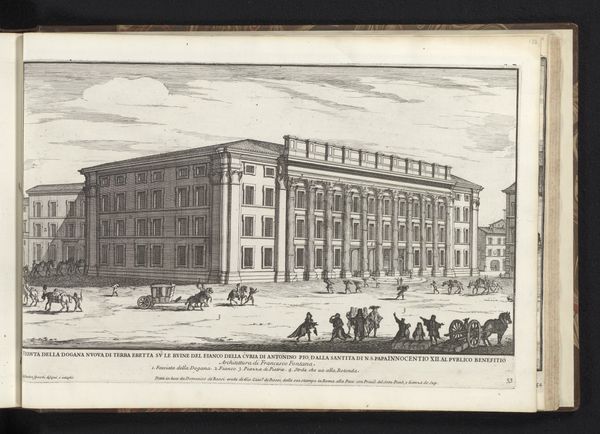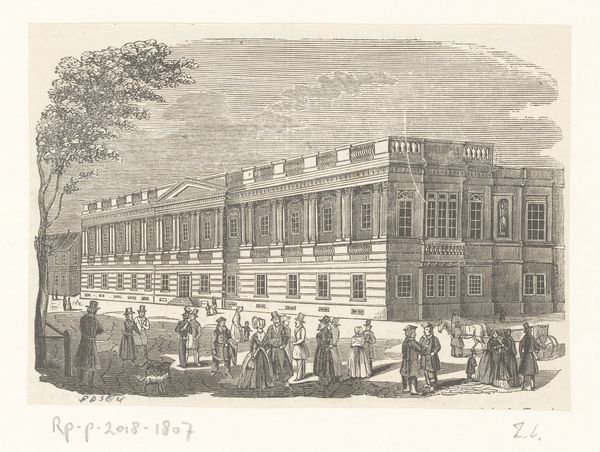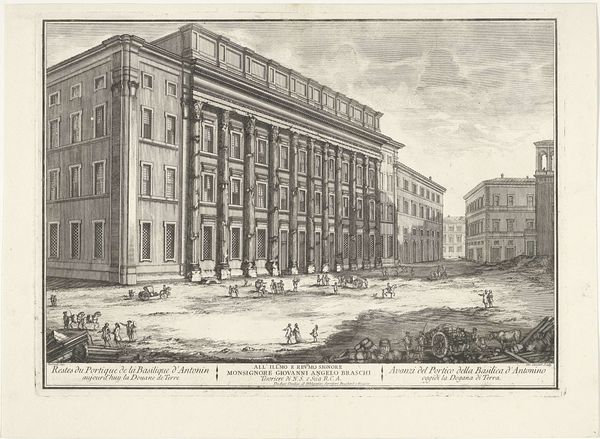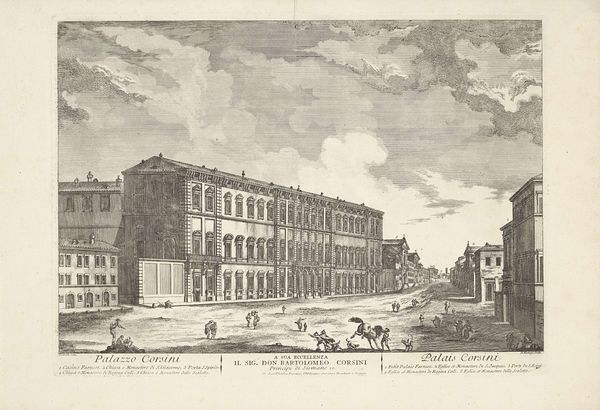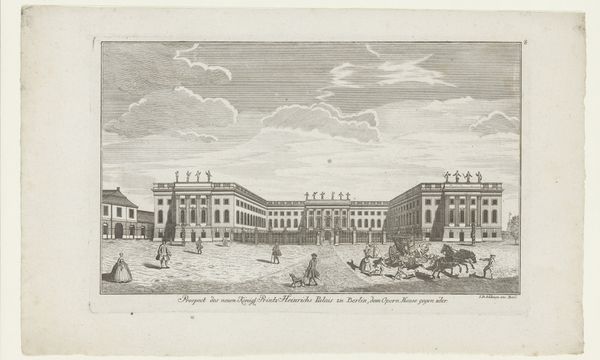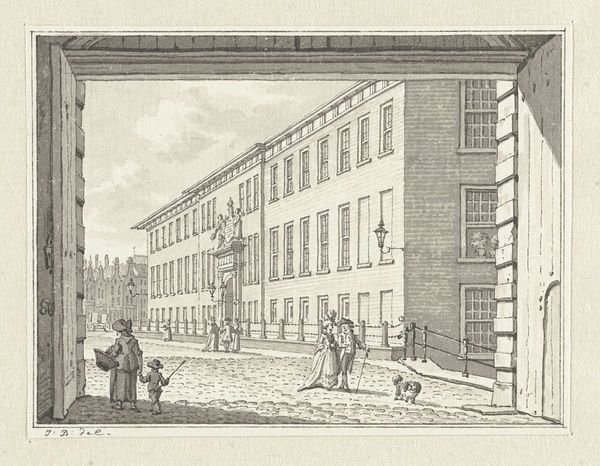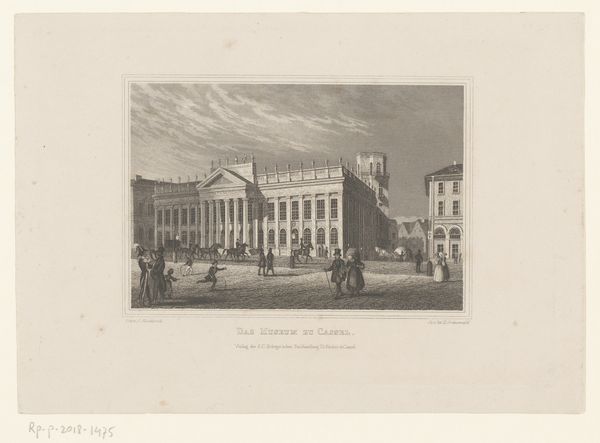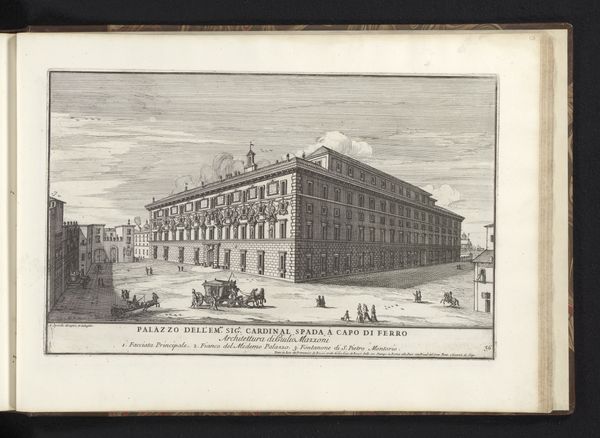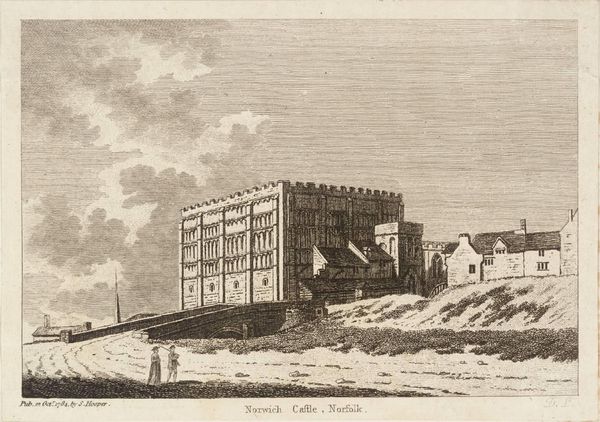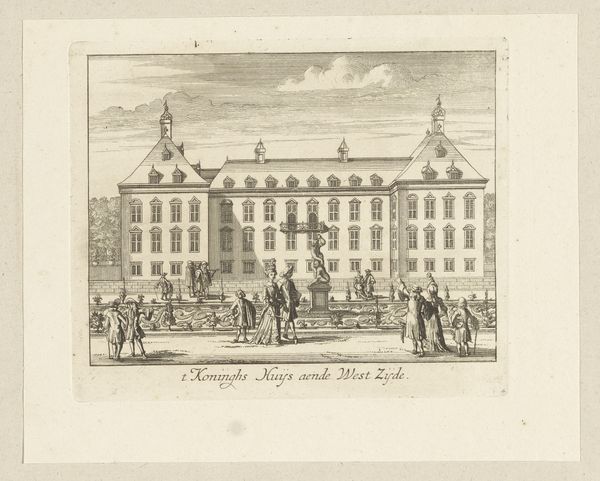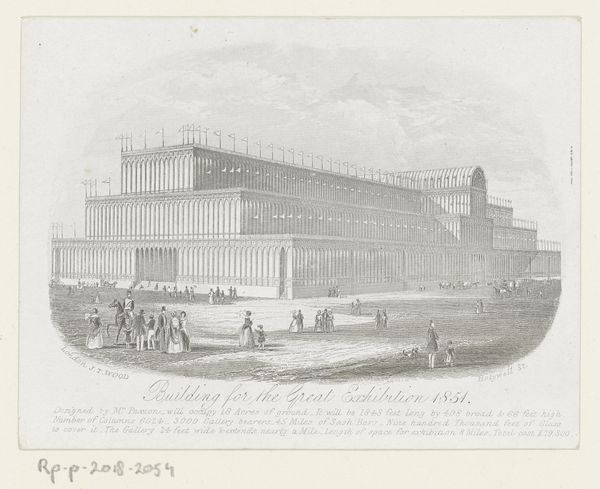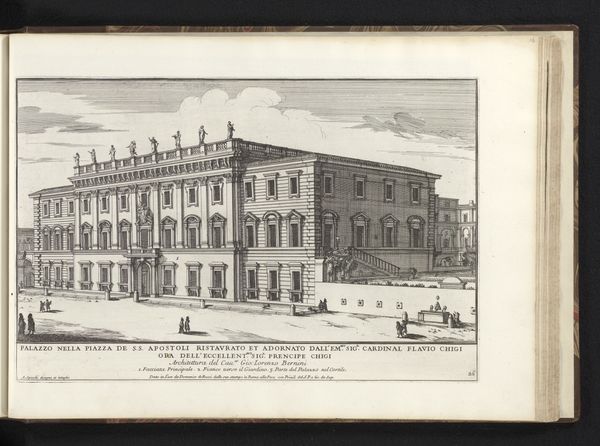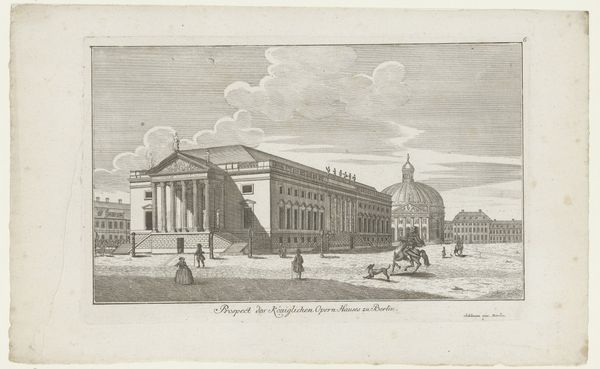
print, engraving, architecture
#
neoclacissism
# print
#
19th century
#
cityscape
#
engraving
#
architecture
Dimensions: height 78 mm, width 97 mm
Copyright: Rijks Museum: Open Domain
Curator: Let's discuss "Bedrijvigheid voor een gevel van een gebouw," an engraving that some attribute to Willem van Senus, dating from 1783 to 1851. It resides here at the Rijksmuseum. Editor: My initial impression is one of somber grandeur. The building's facade dominates, casting long shadows, though the everyday bustling of figures offers some relief to the rigid architectural lines. Curator: Indeed. Notice the clarity and precision in the lines, hallmarks of neoclassical aesthetics. The artist’s control over light and shadow delineates each architectural element—the columns, windows, and entablature—creating a structured visual experience. Semiotically, the facade represents order and rationality. Editor: But within this ordered rationality, consider the activity at ground level. The people—a mix of classes perhaps? Look at their gestures, their clothing. This intersection of public and private, wealth and poverty, tells a story beyond just architectural prowess. What purpose did this building serve in its time? Who were these people, and what power structures were at play? Curator: It is probable that the structure represents civic authority, rendered meticulously to inspire civic virtue through its proportions. We observe an attempt at the sublime achieved through rational design and execution. Editor: But that’s where I see a point of contention. The activity in the foreground isn't just benign ‘city life’. Are the individuals engaged in work or leisure, begging, negotiating? The artist presents a composition but leaves it open for deeper social commentary. Are we glorifying architecture or questioning who has access to that glorious space? Curator: Both, perhaps. The engraving exists as a formal exercise and cultural artifact, showcasing Neoclassicism's visual language and broader social realities within the Dutch cityscape during this period. Editor: Ultimately, it reminds us how deeply intertwined art, power, and society are—how even a seemingly straightforward architectural study can reveal complex stories about who we are and how we interact. Curator: A sentiment with which I wholeheartedly agree. It exemplifies how artworks of the past continue to spark conversations relevant to our contemporary context, fostering richer insights when we analyze them through both formalism and contextual understanding.
Comments
No comments
Be the first to comment and join the conversation on the ultimate creative platform.
